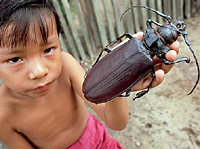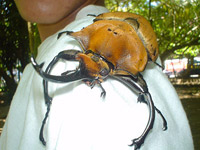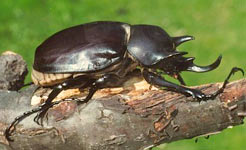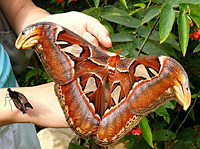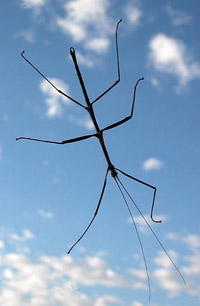Sizes of Insects
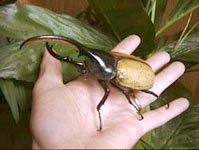
Hercules beetle
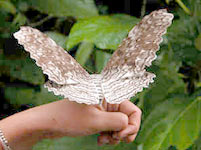
Thysania agrippina
Insects measure in average from 3 to 20 mm. The tiniest can be less than 0.25 mm — for example, feather-winged beetles (Ptiliidae family) and fairyflies (Mymaridae family). The largest specimens of modern insects are found in the tropics.
One of the largest beetles on the Earth — a rare insect living in the South America — the giant long-horned beetle (Titanus giganteus). The length of its body, according to different sources, is from 16 to 21 cm!
The maximal length of the male hercules beetle (Dynastes hercules), occurring in Central and South America, together with its “tusk” is quoted from 15 to 18 cm! However, its body weight is less than that of the Titanus giganteus.
The elephant beetle (Megasoma elephas) can be up to 12 cm long.
Male acteon beetles (Megasoma acteon) from South America have a body of 9 cm long, 5 cm wide, and 4 cm thick.
The longest of all insects are stick insects or walkingsticks (Phasmatidae). Their length of the body can be up to 35 cm!
Among moths and butterflies the largest one is the white witch (Thysania agrippina). Its wing span is up to 30 cm. Atlas moth (Attacus atlas) has a wing span of 24 cm. (Imagine such a moth sitting on a computer screen. It would cover it almost completely!)
The largest insect that ever lived on the Earth is the fossil dragonfly Meganeura of the carboniferous period: its wing span was 1 meter and its length of the body was 60 cm!
* * *
In Russia, the largest insect is found in the Far East. It is Callipogon relictus. Males of this beetle may measure up to 11 cm in length, including impressive jaws. Among moths and butterflies, the great peacock moth (Saturnia pyri) is worth to be mentioned. Its wingspan is 15 cm.
